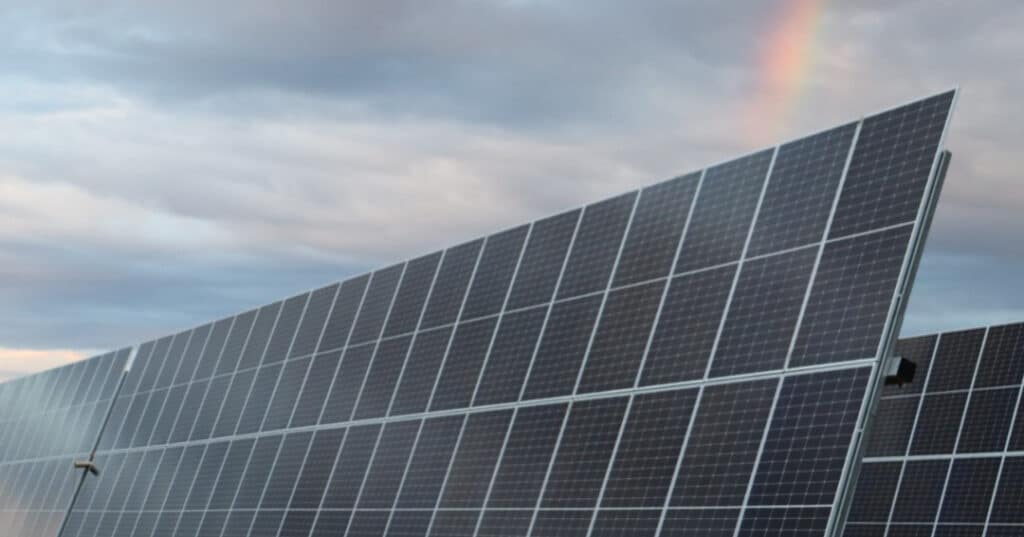Is Corporate America Leading Solar Adoption?

Utility-scale solar adoption is rising in the United States, but do we have some of our favorite brands to thank?
The U.S. Energy Information Administration (EIA) says more than 29 gigawatts (GW) of solar energy could be installed this year, comprising more than half of new energy coming online. According to the organization, the projected 29.1 GW would be more than double the next highest installation year in 2021.
Solar has been part of the ongoing renewable energy industry renaissance for over a decade. It’s not showing signs of slowing down, either – even with supply chain hiccups in 2022.
So, what’s causing so much change in the solar market, and why are people bullish on the future of solar power? It comes down to a few stars aligning at the right time, including policy changes, new funding and support, and better, more consistent supply.
It also helps that America’s largest and most influential brands are stepping up to add solar to their portfolios.
Utility-Scale Solar Moves Beyond Energy Producers
When you think about utility-scale solar, utilities are the first thing that comes to mind.
Although utilities are still the largest solar energy producers, corporations across the U.S. are testing the waters. Increasingly, these companies have aggressive renewable energy and carbon neutrality goals, making their investments a no-brainer.
Meta (which owns Facebook, Instagram, and WhatsApp) is leading the way with nearly 3,600 MW (3.6 GW) of solar power installed as of June 2022. Other corporate giants like Amazon, Microsoft, Target, Cargill, and Kaiser Permanente are following suit, investing in solar projects across the United States. In fact, 18 of the top 25 companies on the SEIA’s 2022 Solar Means Business report have 100% renewable energy or carbon-neutral goals.
Though the attention often goes to huge companies, the truth is hundreds of organizations are investing in utility-scale solar. Through June 2022, about 19 GW of solar can be attributed to corporate solar investments, and 27 GW more is expected to come online by 2025.
Why Are Companies Choosing to Go Solar?
Billion-dollar organizations aren’t usually known for their kindness, but investing in solar installations carries several benefits.
Not only do they generate electricity that can be used by the company to offset electricity costs, but the projects also open the door for more clean energy initiatives to offset greenhouse gas emissions.
Sustainability
According to the SEIA, nearly one-fourth of large-scale solar projects had at least one commercial buyer.
We know solar energy is one way of reducing our carbon footprint while distancing ourselves from fossil fuels. Reducing carbon dioxide emissions impacts greenhouse gases, which radiate heat in our atmosphere. Greenhouse gases are partially to blame for rising temperatures causing environmental concerns, including ocean acidification.
The good news is corporate solar installations are making a difference. According to the SEIA’s reporting, the amount of CO2 reduced is equal to removing 4.4 million cars from the road.
It’s Tax-Friendly
When the Inflation Reduction Act was signed into law in August 2022, it opened the door for homeowners, companies, and others to invest in solar energy.
Not every company is Meta, Walmart, or Amazon, but they can still take advantage of IRA tax incentive programs. These include the Investment Tax Credit (ITC) and the Production Tax Credit (PTC), which cover installation costs and electricity generation, respectively.
The Investment Tax Credit is upfront and reduces federal income tax liability for installation costs, depending on the system’s cost. The Production Tax Credit is determined by the amount of electricity generated. It reduces federal income tax liability based on how many kWh are produced during the system’s first 10 years.
Depending on the size of the installation and how much power is generated, sometimes the ITC is the better tax credit to choose. However, if the system produces a lot of electricity, the PTC is more beneficial.
There are several eligibility requirements tied to the incentives, but navigating them successfully usually produces long-term savings.
Low-Cost Electricity
No one can resist a bargain, including your friendly neighborhood conglomerate.
Renewable energy is one of the cheapest forms of energy out there, undercutting fossil fuels across the board. One reason for the low cost is the massive drop in solar project costs over the last decade. According to the World Economic Forum, solar prices have fallen roughly 85% in the last decade, positioning more companies than ever to take advantage of emerging technologies.
Solar isn’t the only renewable energy worth considering. Most renewables coming online today, including wind energy, produce electricity more cheaply than traditional fossil fuels like natural gas or coal.
Positive Long-Term ROIs
Establishing a solar farm is still expensive, but government tax incentives and generating low-cost electricity for decades lessen the sting.
Solar energy electrical costs are between .03 and .06 per kilowatt hour (kWh). Fossil fuels come in slightly higher, at .05 to .17 per kWh. Kilowatt-hours measure electricity usage based on a 1,000-watt appliance.
When stretched out across the typical lifespan of 25-30 years with little maintenance, it’s understandable why more companies are investing in panels. Panel warranties also usually last 25 years, making them a low-risk investment for companies with aspirational emission reduction and energy goals.
Renewables Become Commonplace
Establishing massive solar farms was once too expensive for everyone but the largest companies.
Today… not so much.
Building a solar array is still expensive, but the cost of entry is falling, allowing more companies to participate. Meanwhile, installations are more reliable and last longer, improving ROI across their lifespan.
This isn’t to say solar energy, wind power, geothermal energy, and other renewables will take over tomorrow. All renewables, including solar, must keep improving to increase efficiency and live up to the world’s ambitious climate change goals.
Corporate America, including some of the world’s most influential brands, is helping lead the charge. Of the top 25 companies featured on SEIA’s Solar Means Business report, 16 are on the Fortune 500.
It’s an exciting time to work in the renewable space. Solar technology is rapidly improving, and new innovations are on the horizon. Companies jumping on the trend today could potentially position themselves for massive future returns.


